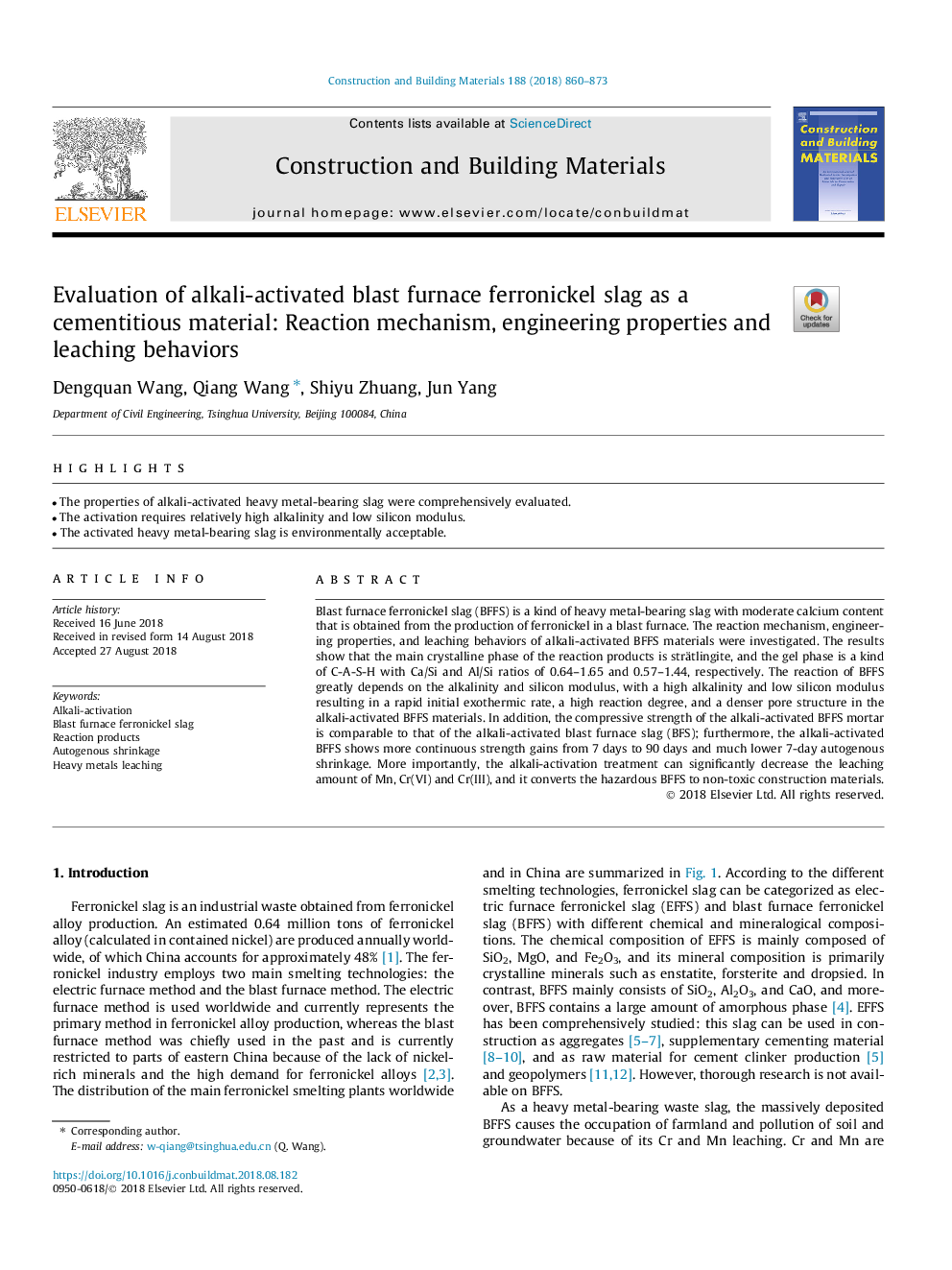| Article ID | Journal | Published Year | Pages | File Type |
|---|---|---|---|---|
| 10131872 | Construction and Building Materials | 2018 | 14 Pages |
Abstract
Blast furnace ferronickel slag (BFFS) is a kind of heavy metal-bearing slag with moderate calcium content that is obtained from the production of ferronickel in a blast furnace. The reaction mechanism, engineering properties, and leaching behaviors of alkali-activated BFFS materials were investigated. The results show that the main crystalline phase of the reaction products is strätlingite, and the gel phase is a kind of C-A-S-H with Ca/Si and Al/Si ratios of 0.64-1.65 and 0.57-1.44, respectively. The reaction of BFFS greatly depends on the alkalinity and silicon modulus, with a high alkalinity and low silicon modulus resulting in a rapid initial exothermic rate, a high reaction degree, and a denser pore structure in the alkali-activated BFFS materials. In addition, the compressive strength of the alkali-activated BFFS mortar is comparable to that of the alkali-activated blast furnace slag (BFS); furthermore, the alkali-activated BFFS shows more continuous strength gains from 7â¯days to 90â¯days and much lower 7-day autogenous shrinkage. More importantly, the alkali-activation treatment can significantly decrease the leaching amount of Mn, Cr(VI) and Cr(III), and it converts the hazardous BFFS to non-toxic construction materials.
Related Topics
Physical Sciences and Engineering
Engineering
Civil and Structural Engineering
Authors
Dengquan Wang, Qiang Wang, Shiyu Zhuang, Jun Yang,
